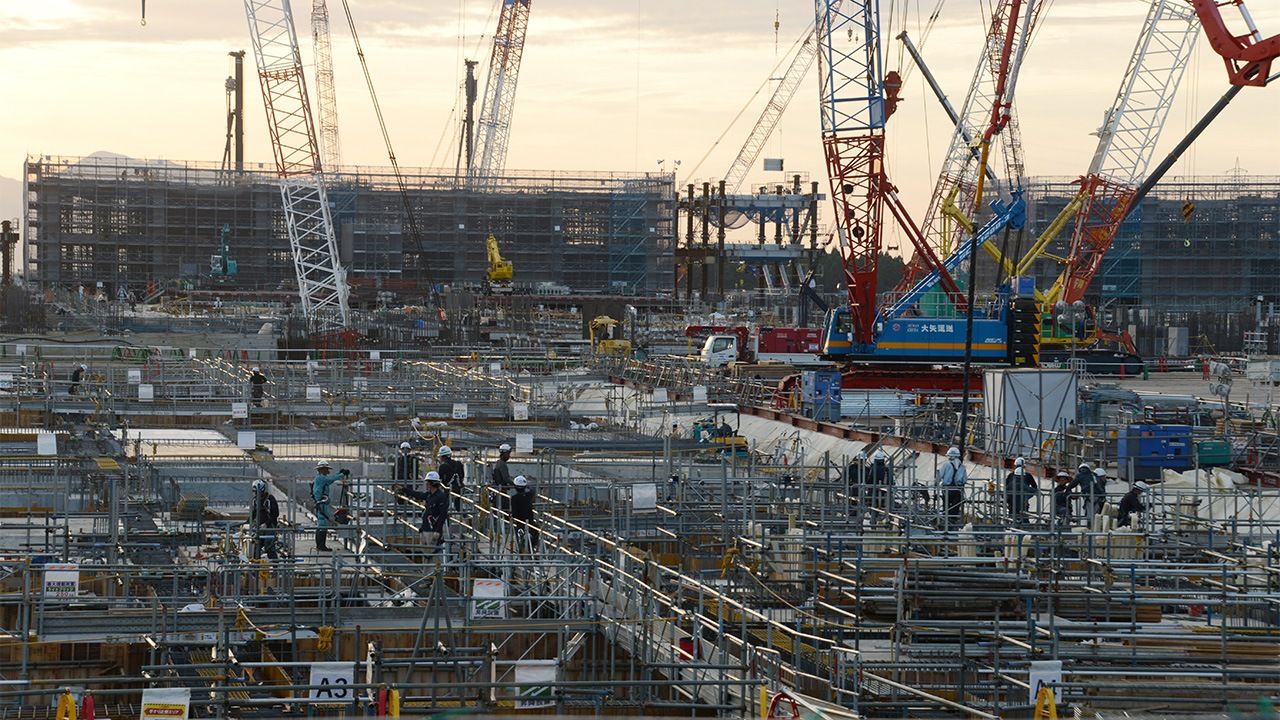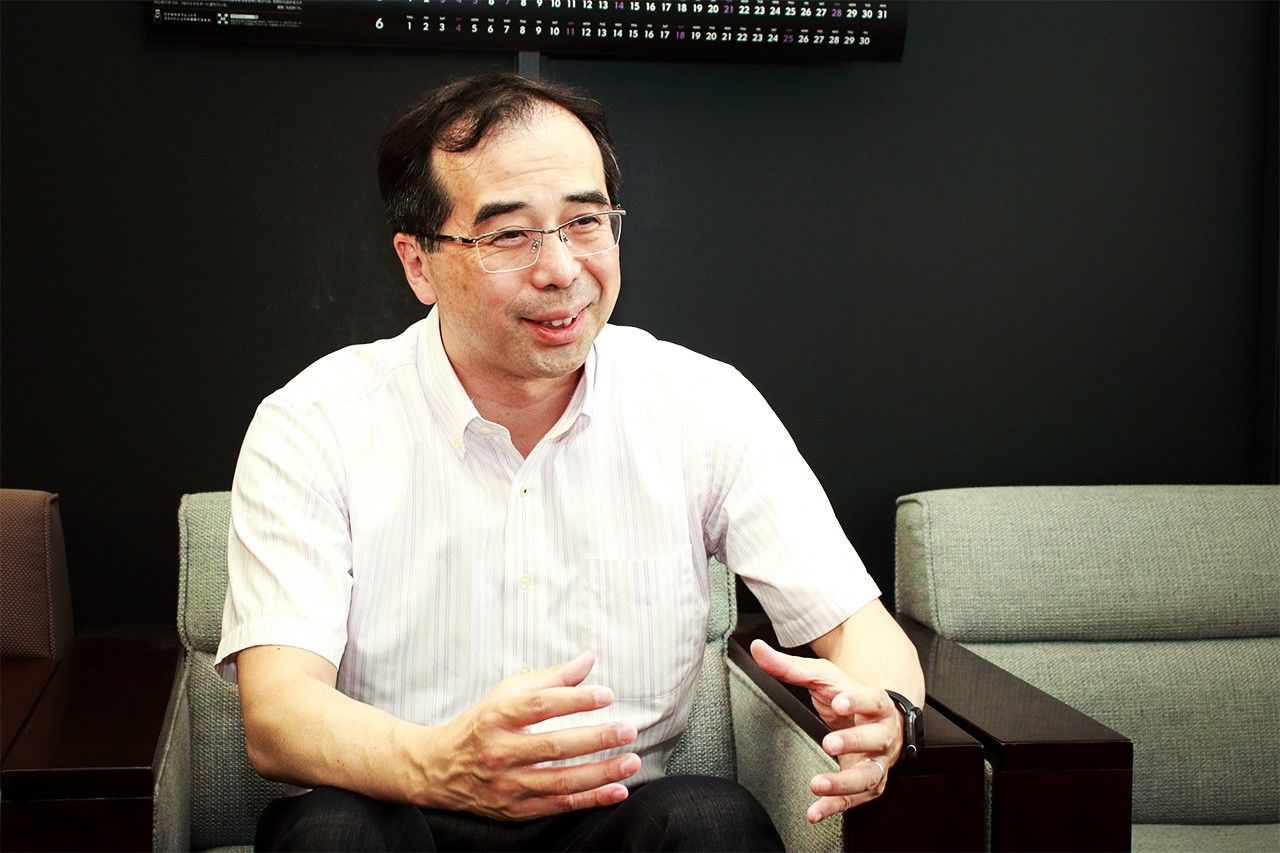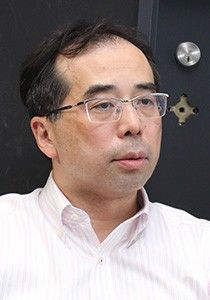
Japan’s New Semiconductor Offensive
Japan Plots Semiconductor Comeback: An Interview with Nishikawa Kazumi (Part 1)
Economy Politics- English
- 日本語
- 简体字
- 繁體字
- Français
- Español
- العربية
- Русский
New Supply Chain Worries
TAKENAKA HARUKATA The Ministry of Economy, Trade, and Industry announced its new Strategy for Semiconductors and the Digital Industry in June 2021. The month before, the ruling Liberal Democratic Party had issued an interim report calling for government subsidies to attract cutting-edge foreign chip manufacturers to Japan. Can you explain the process leading up to the strategy’s adoption?
NISHIKAWA KAZUMI METI began deliberating economic security issues in earnest back in 2019, but we weren’t specifically targeting the semiconductor industry at that point. Then, in the summer of 2020, the US government tightened restrictions on the sale of semiconductors to China’s Huawei Technologies, and a big chunk of Japan’s chip output stopped moving. Suddenly, we were confronted with the real-world impact of economic security issues on business activity.
The fire that broke out at the Asahi Kasei foundry in Miyazaki Prefecture in the fall of 2020 caused a lot of economic fallout. That plant produces several hundred kinds of chips that are used in everything from automobiles to intercoms. Japan has eighty-four semiconductor fabs altogether, but only a few of those produce the really advanced chips. When production at one of those facilities ground to a halt, it wreaked havoc with the supply chain and caused quite an uproar. In February 2021, a Samsung fab in Texas had to halt production owing to power outages caused by a winter storm. Elsewhere, COVID-19 lockdowns had forced chip plants to suspend operations. Then in March came the fire at Renesas Electronics’ Naka foundry.
Together, these events drove home the realization that all kinds of things—not just geopolitical developments but also accidents and natural disasters—can suddenly cut off the flow of critical products, with potentially huge repercussions for our economy and society.

METI official Nishikawa Kazumi (© Nippon.com)
No Longer a Powerhouse
TAKENAKA And that’s when METI decided to take action?
NISHIKAWA Yes, in March 2021 the ministry decided to draft a strategy for semiconductors and the digital sector. At that time, we felt the first step was to instill a wider awareness that semiconductors, like food and energy, are essential to people’s daily lives and the nation’s economic activity. A lot of people here are still under the impression that Japan is an industrial powerhouse in areas like electronics and semiconductors. It was time to give an objective accounting of how far Japan’s semiconductor industry had fallen.
We also believed there was a need for a new type of industrial policy—one focused less on conquering overseas markets and accumulating foreign currency reserves, as in the twentieth century, and more on shoring up our industrial base from the standpoint of economic security. With that in mind, we launched wide-ranging deliberations, soliciting the input of all kinds of experts and stakeholders, including people outside the semiconductor industry.
The bottom line was that Japan’s global share of semiconductor sales had shrunk from 50 percent at its peak to less than 10 percent. And as things were going, Japan would cease to be a significant player in the industry by 2030.
Everyone knows that the semiconductor industry has grown dramatically as a result of the digital revolution. Global semiconductor sales totaled 50 trillion yen in 2020 and are expected to reach 100 trillion yen by 2030. But Japanese chip production has been practically flat.
Of course, METI has long recognized the importance of the digital sector, but until recently, its policies and resources were focused on applications of technology, rather than the fundamental building blocks that go into it.
Keeping Up with the West
TAKENAKA How did Washington’s semiconductor initiative figure into your thinking?
NISHIKAWA In early 2021, the administration of President Joe Biden launched a major program to revitalize the US semiconductor industry, including billions of dollars in federal funding for construction or modernization of manufacturing facilities. It was striking that even the United States, which has generally been critical of industrial policy, had begun subsidizing its semiconductor industry. In addition, the European Commission had proposed legislation called the Chips Act to encourage semiconductor production in the European Union. With the world’s microchip supply chains in flux, the prevailing view was that, without comparable measures, Japan would be hard-pressed even to maintain the status quo.
In keeping with METI’s June 2021 recommendations, the government made the decision to pursue a semiconductor strategy on a scale comparable to that of other countries. I think that was the most important contribution of our initial Strategy for Semiconductors and the Digital Industry.
TAKENAKA Did the LDP’s recommendations influence the strategy?
NISHIKAWA Oh, sure, that made a big difference. METI could hardly request that level of funding out of the blue. The strategy wouldn’t have gone anywhere without solid support from the Diet and from the media as well. In May 2021, a group of LDP politicians formed a parliamentary association to promote semiconductor strategy, headed by Amari Akira. I recall the late former Prime Minister Abe Shinzō, one of the group’s top advisors, arguing that we had to “do something on a completely different level.”
Chronology of Japan’s Semiconductor Strategy
| 2020 | August | US government announces new restrictions on exports to Chinese telecommunications equipment giant Huawei Technologies. |
| Autumn | Global semiconductor shortages reported. | |
| 2021 | March | European Commission issues 2030 Digital Compass outlining European digital strategy. |
| June | METI releases Strategy for Semiconductors and the Digital Industry. | |
| November | Taiwan Semiconductor Manufacturing Co. announces plans to build chip plant in Kumamoto Prefecture. | |
| 2022 | August | US CHIPS and Science Act signed into law. |
| Japanese semiconductor venture Rapidus launched by eight major Japanese companies, including Toyota. | ||
| 2023 | February | Rapidus announces decision to build semiconductor plant in Chitose, Hokkaidō. |
| June | METI releases revised Strategy for Semiconductors and the Digital Industry. | |
| July | State-backed fund Japanese Investment Corp. acquires chip materials maker JSR. |
Three-Step Program for Massive Investment
TAKENAKA In November, about five months after the strategy came out, METI released a report on the progress of the plan that included a significant policy upgrade. It called for a kind of “hop-step-jump” process starting with the establishment of domestic manufacturing bases, then proceeding to the acquisition of next-generation semiconductor technology, and finally to the development of future technology through global collaboration. What was your assessment of the situation at that point, and what were you aiming at?
NISHIKAWA By that point, other countries had announced massive spending programs and were competing to attract investment, particularly in advanced microprocessor foundries. There had been a lot of action over the past year, with TSMC, or Taiwan Semiconductor Manufacturing Co., starting on a new fab in Arizona and Intel considering a massive investment in the EU. Advanced microprocessors are a sensitive area for Japan, a symbol of the domestic semiconductor industry’s decline, so these movements sparked a good deal of interest.
At the same time, we believed it was important to beef up the resilience of our home-grown semiconductor industry. In terms of numbers, Japan has more foundries than any other country, but most of them are small, old, and suffering from underinvestment. In some cases, the equipment is fully depreciated, and the owners are just trying to keep it running as long as they can to maintain cash flow. Back in June 2021, our focus was on investing in these facilities to revitalize them.
By November, we had drawn up a new plan based on a three-step program for promoting large-scale investment. First, establish a solid manufacturing base at home; then, develop next-generation semiconductors that could be supported by that base; and finally, use that progress as a springboard for the development of future technology. The logic of this order is obvious, but we wanted to underscore the importance of following it step by step. We also provided stakeholders with information regarding the kinds and quantities of semiconductors we were targeting.
Altogether, we’re aiming for sales of about 12 trillion yen, centered on semiconductors for industry, the internet of things, automobiles, and next-generation smart networks. The goal is to boost Japan’s annual semiconductor sales to more than 10 trillion yen by 2030, when the global market is expected to be worth about 100 trillion yen.
Role of TSMC’s Kumamoto Plant
TAKENAKA In November 2021, TSMC announced plans to build a new fab in Kumamoto Prefecture with the support of the Japanese government. The plan is to begin mass production of microprocessors in 2024. How did that deal come about?
NISHIKAWA I can’t provide any specifics on the negotiations, but judging from media reports and other analyses, TSMC was keen to pursue overseas expansion. In Taiwan, it was grappling with water shortages and a limited pool of engineers. It had already built a foundry in Nanjing, but especially in view of the curbs slapped on Huawei, it needed to diversify further. Without some production bases outside of Taiwan and China, it didn’t think it would be able to keep up with future demand. Its first step was to build a new fab in the United States. Then it began thinking about where to build its next advanced microprocessor plant, and it must have thought that Japan was a logical choice.
TAKENAKA And, of course, the Japanese government has promised to invest 400 billion yen. How was that figure arrived at?
NISHIKAWA The government was in a position to contribute up to half the total cost of a project under legislation passed by the Diet. Since the actual cost is now estimated at 1.3 trillion yen, the government’s subsidy comes to less than 40 percent. According to media analyses, TSMC was willing to consider investing in the United States and Japan if they would compensate it for the higher cost of production as compared with Taiwan.
But it’s important to realize that public subsidies aren’t the only compensation. There are also the issues I’ve mentioned, such as a shortage of personnel, unreliable water supply, and also electric power problems in Taiwan. TSMC added it all up and calculated what it would take to produce in Japan and sell to the market at a comparable profit, and they decided they would need about 400 billion yen in assistance.
TAKENAKA About what portion of Japanese industry’s requirements for advanced semiconductors will the Kumamoto plant supply when it’s operating at full capacity?
NISHIKAWA I don’t have exact figures, but Japanese use accounts for around 10 percent of the global market for microprocessors built on sub-40-nanometer processes. Of course, one facility can’t meet all that demand, but I think it can cover a good portion. Sony and Denso both have minority stakes in Japan Advanced Semiconductor Manufacturing, which will operate the Kumamoto semiconductor plant. The foundry will supply semiconductors for Sony’s image sensors, which are sold all over the world, not just in Japan. The other major application is automotive. By the second half of the 2020s, this level of advanced logic technology will be mainstream for automobile components.
TAKENAKA The Kumamoto fab is slated to fabricate logic chips with 22-to-28-nanometer and 12-to-16-nanometer processes. My understanding is that these don’t qualify as leading-edge microprocessors. How important is it for Japan to produce cutting-edge semiconductors?
NISHIKAWA Our basic goal in bringing manufacturers like TSMC to Japan is to secure the semiconductors needed by our domestic auto industry, our sensor manufacturers, and the various industries that contribute to smart urban infrastructure. If TSMC were to produce 5-nanometer chips here, who would it be selling them to? Of course, we’ll need them eventually, but for now, most of the potential buyers are located outside of Japan. So, then, why not produce them in the United States, for example? It wouldn’t make sense from our point of view, either, if the Kumamoto operation ended up shipping most of its products directly overseas. We’re starting with what Japanese industry needs.
(To be continued in part 2.)
(Originally written in Japanese by Ishii Masato of the Nippon.com Editorial Department based on a June 22, 2023, interview. Banner photo: TSMC’s Kumamoto semiconductor foundry in Kikuyo, Kumamoto Prefecture, a joint venture with the Sony Group and other Japanese manufacturers, under construction on October 26, 2022. © Jiji.)
